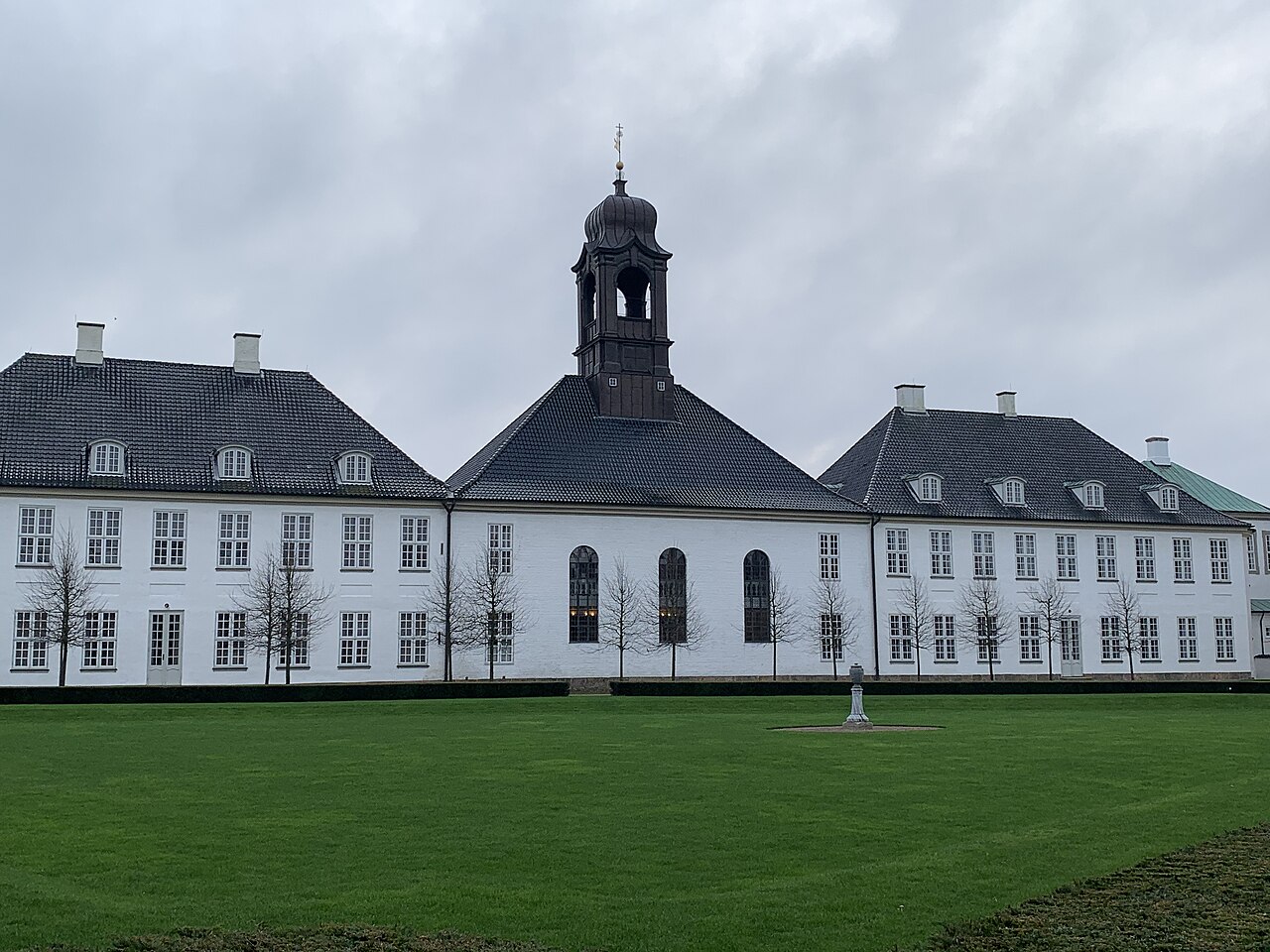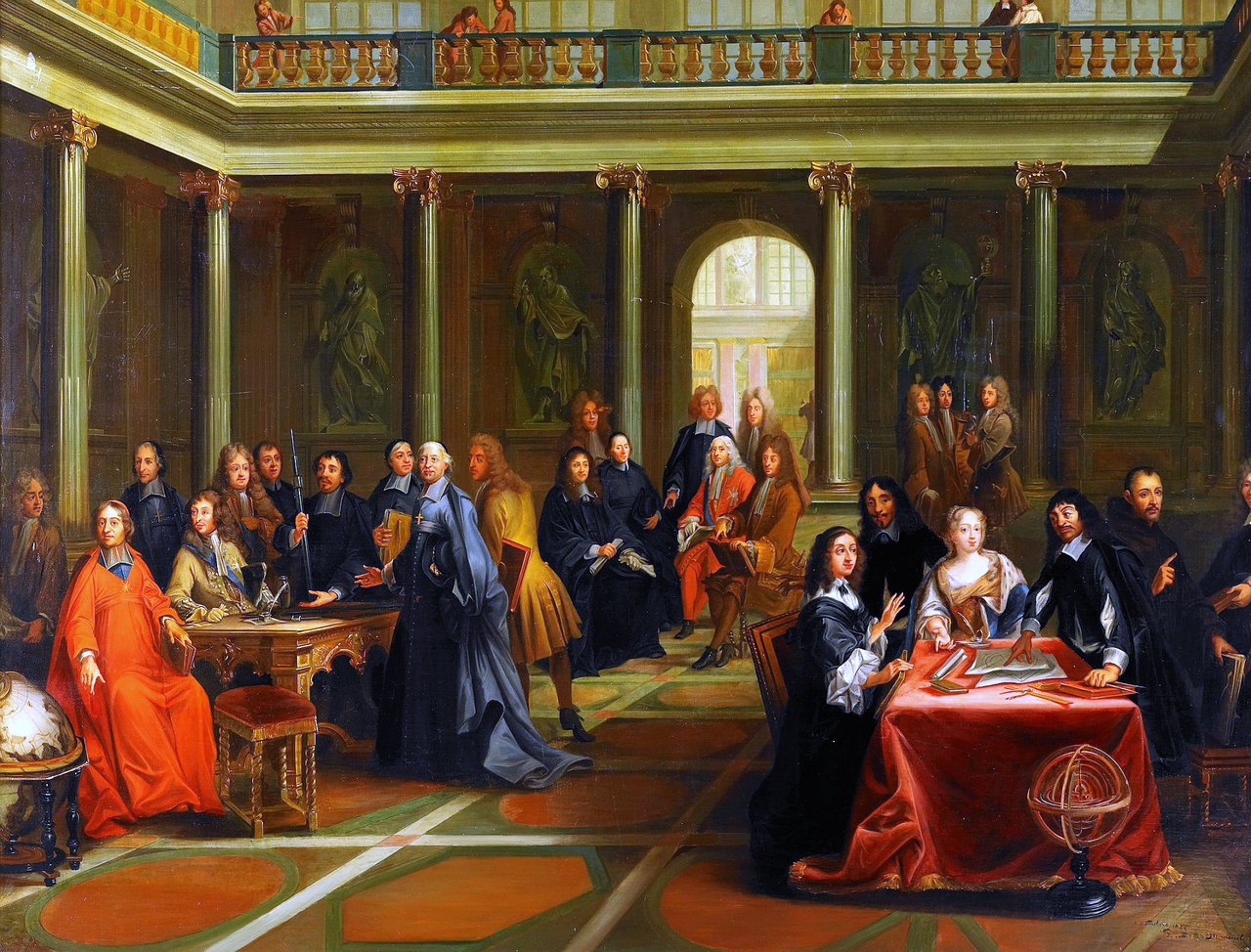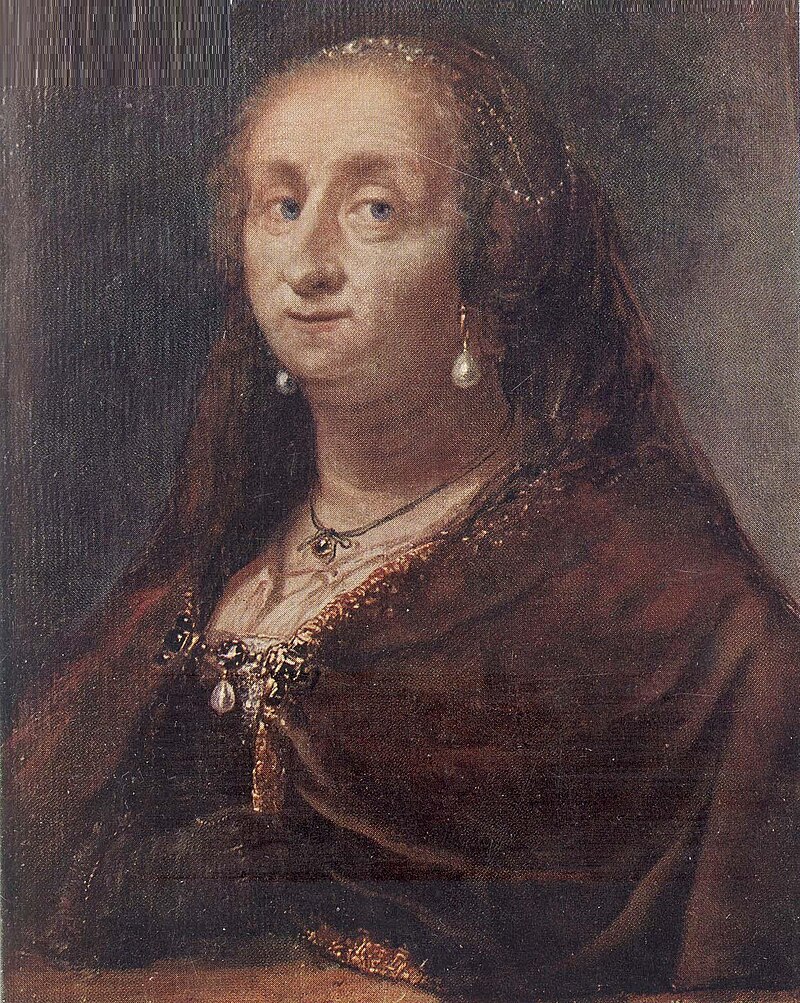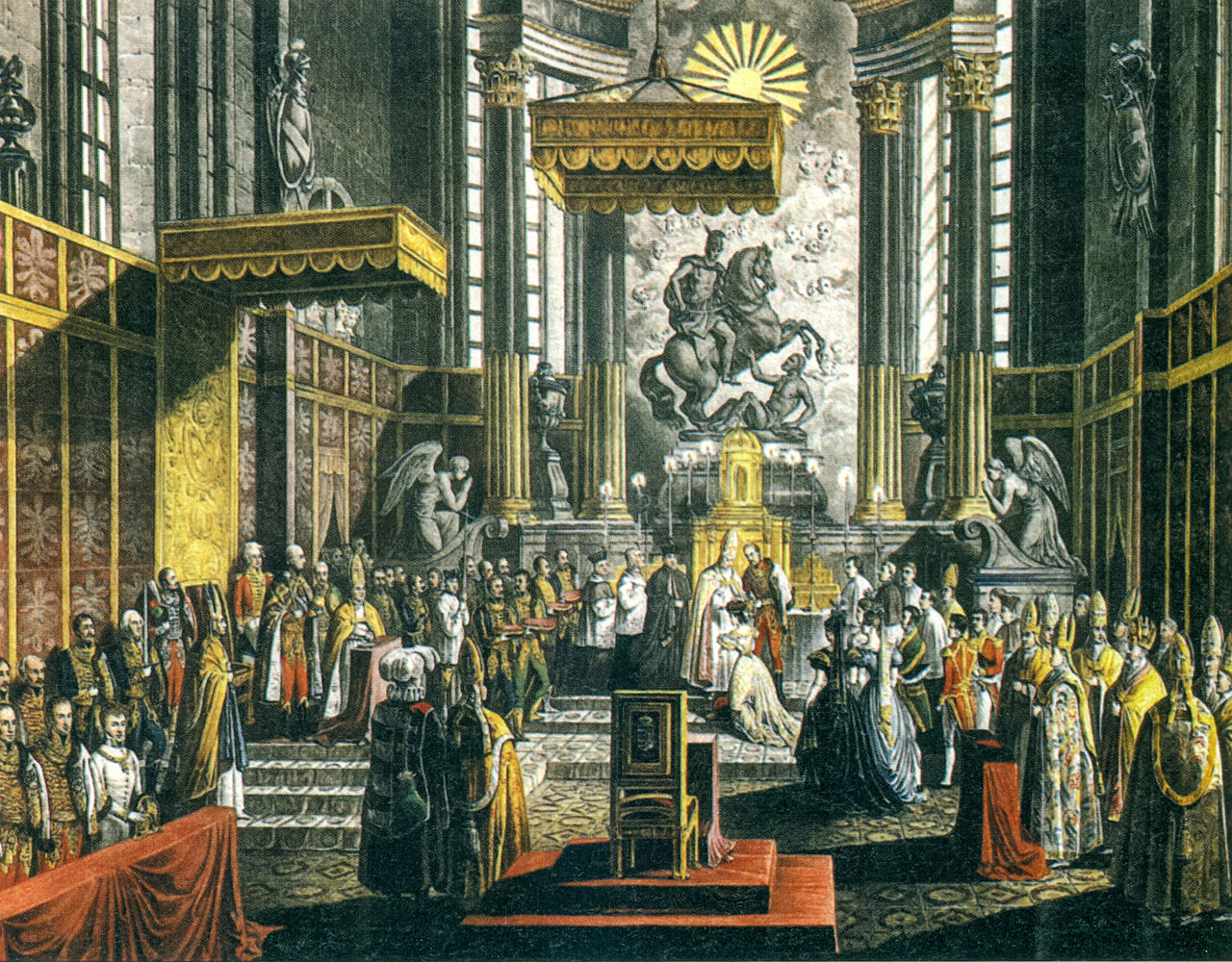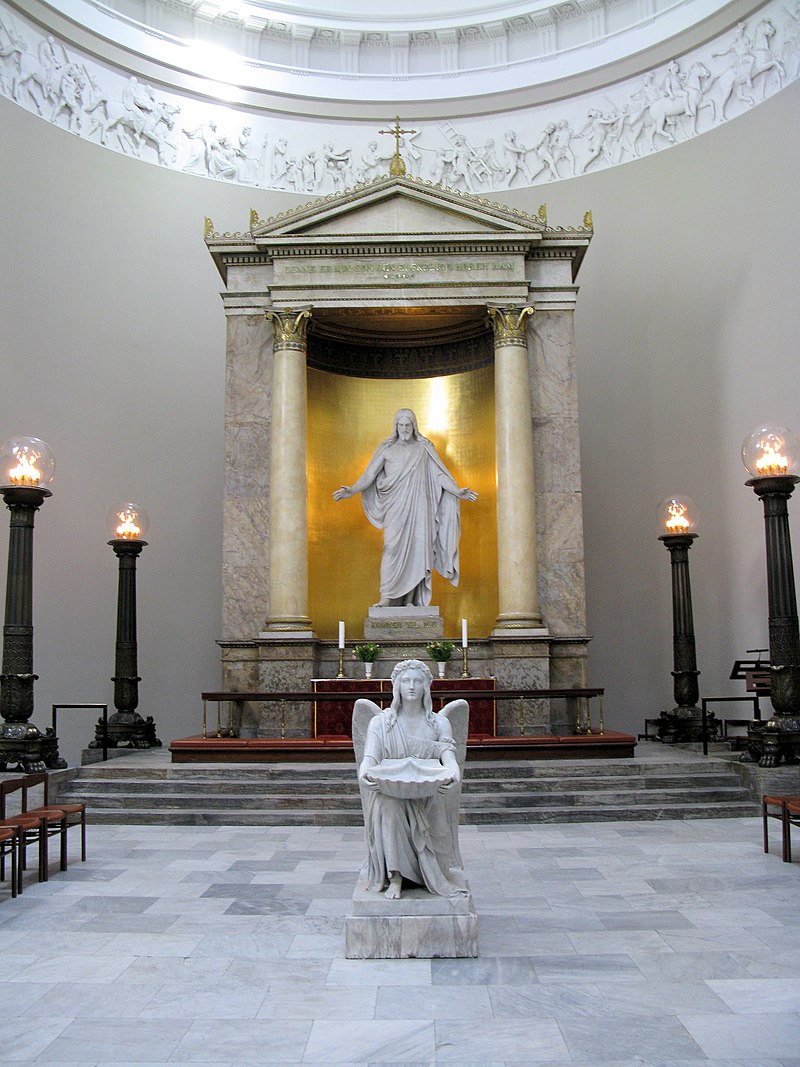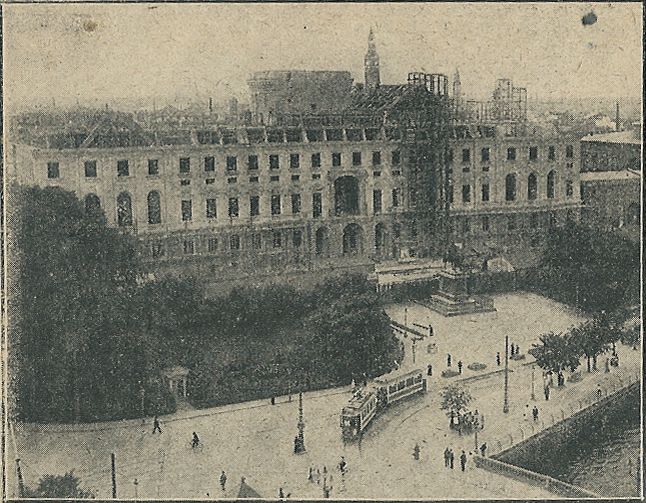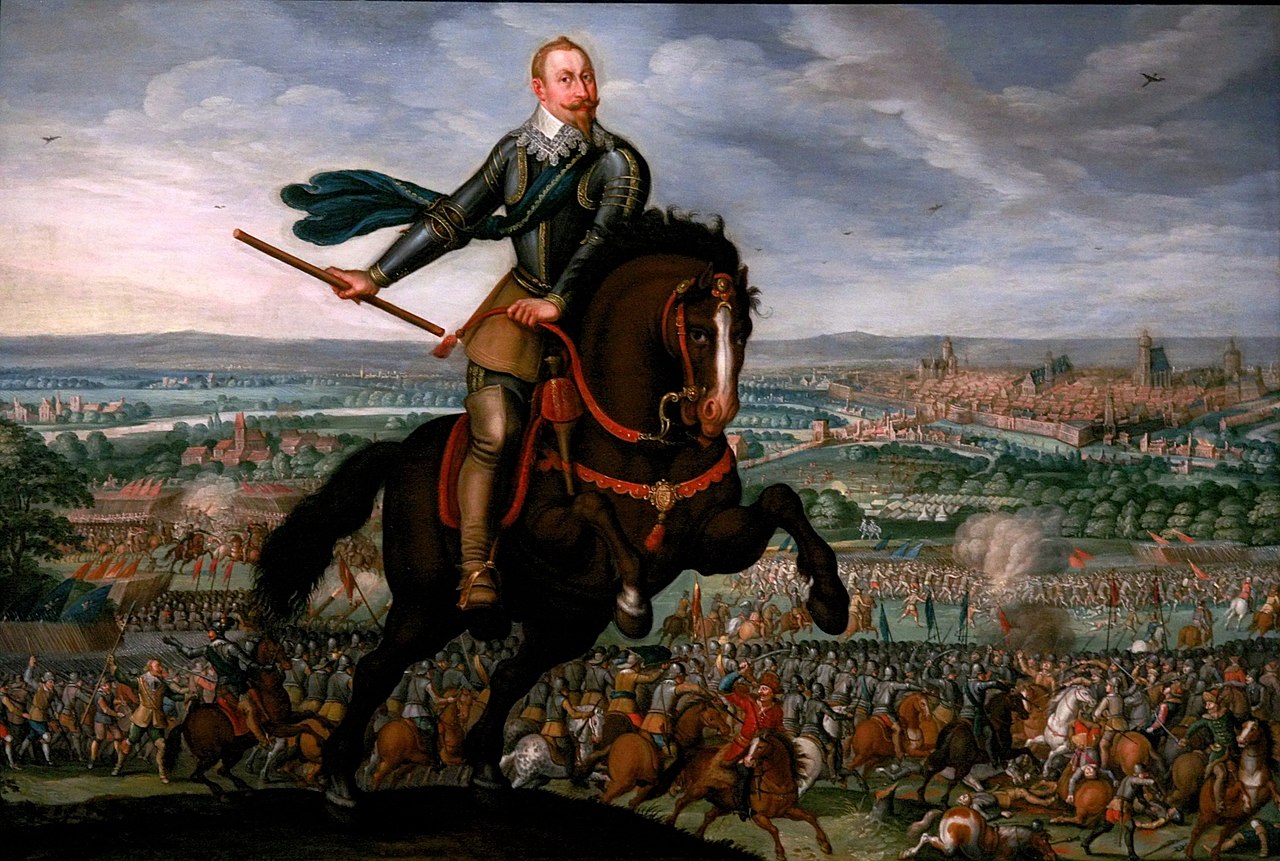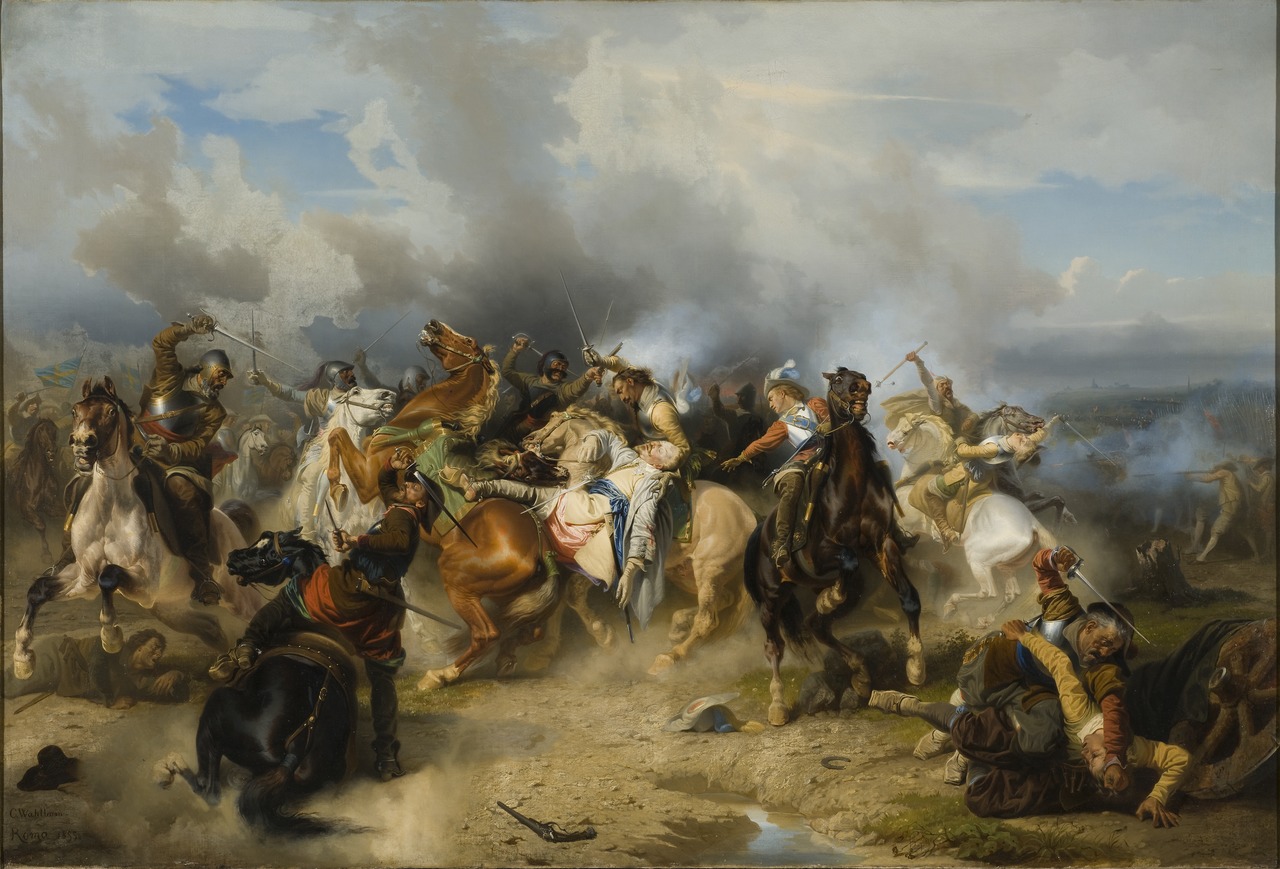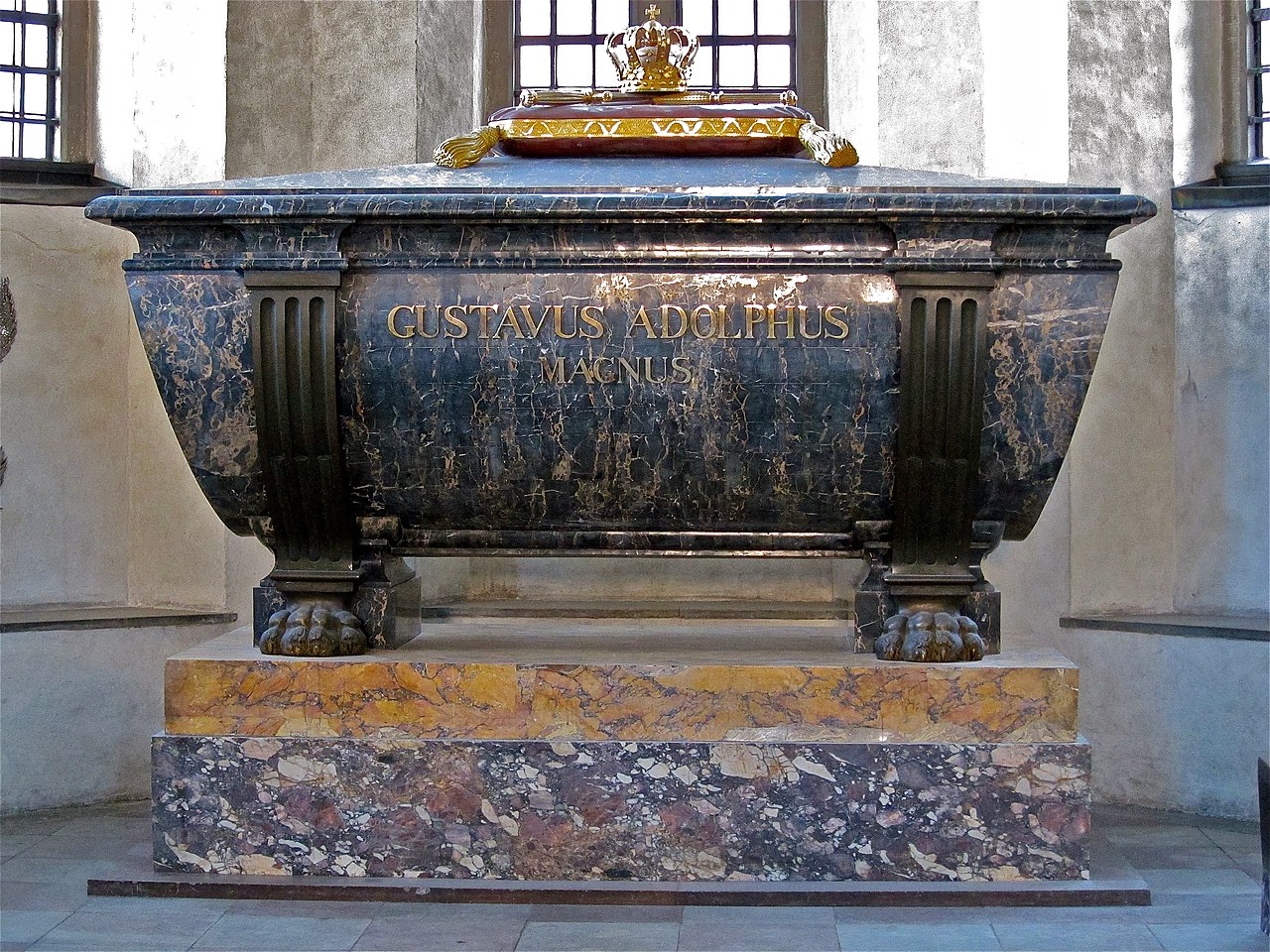by Susan Flantzer
© Unofficial Royalty 2021

Karl X Gustav, King of Sweden; Credit – Wikipedia
Karl X Gustav became King of Sweden upon the abdication of his cousin Christina, Queen of Sweden. Born Karl Gustav of Zweibrücken-Kleeburg on November 8, 1622, at Nyköping Castle in Nyköping, Sweden, he was the third of the eight children and the eldest of the three sons of Johann Casimir, Count Palatine of Zweibrücken-Kleeburg and Princess Katarina of Sweden. His paternal grandparents were Johann I, Count Palatine of Zweibrücken and Magdalene of Jülich-Cleves-Berg. His maternal grandparents were Karl IX, King of Sweden and his first wife Maria of the Palatinate-Simmern. Karl Gustav’s mother Katarina of Sweden was the only surviving child of her parents and the half-sister of Gustavus II Adolphus the Great, King of Sweden.
Karl Gustav had seven siblings:
- Christina Magdalena of Zweibrücken-Kleeburg (1616 – 1662), married Friedrich VI, Margrave of Baden-Durlach, had eight children
- Karl Friedrich of Zweibrücken-Kleeburg (1618 – 1619), died in infancy
- Elisabeth Amalia of Zweibrücken-Kleeburg (1619 – 1628), died in childhood
- Marie Euphrosine of Zweibrücken-Kleeburg (1625 – 1687), married the future Swedish Chancellor Count Magnus Gabriel De la Gardie, had eleven children
- Eleonore Katarina of Zweibrücken-Kleeburg (1626 – 1692); married Landgrave Friedrich of Hessen-Eschwege, had six children
- Adolf Johann I, Count Palatine of Zweibrücken (1629 – 1689), married (1) Elizabeth Beata Brahe, had one son who died in infancy (2) his first wife’s sister Elsa Elizabeth Brahe, had nine children
- Johann Gustav of Zweibrücken-Kleeburg (born and died circa 1630)


Karl Gustav’s parents: Princess Katarina of Sweden and Johann Casimir, Count Palatine of Zweibrücken-Kleeburg: Credit – Wikipedia
In 1622, King Gustavus Adolphus of Sweden asked his half-sister Katarina to move back to Sweden with her husband Johann Casimir, Count Palatine of Zweibrücken-Kleeburg, and their children. Prince Carl Philip of Sweden, brother of Gustavus Adolphus and half-brother of Katarina, had died in early 1622, leaving no heirs to the Swedish throne except Katarina and her children. At the time, the Thirty Years’ War (1618 – 1648) was raging through the territories of the German monarchies and Gustavus Adolphus wanted to move Katarina and her family to safety in Sweden. They arrived in Sweden in June 1622 and remained permanently in Sweden. Later that year, the birth of Katarina’s son Karl Gustav, a male heir to the throne of Sweden, immediately strengthened her position. Katarina and her husband were granted Stegeborg Castle and Östergötland as their fief and Katarina was styled Countess of Stegeborg.
Gustavus Adolphus’ wife Maria Eleonora of Brandenburg had given birth to a stillborn daughter in 1621, a daughter named Christina in 1623 who lived for only eleven months, and a stillborn son in 1625. Finally, in 1626, she gave birth to a child who survived, a girl named Christina. Gustavus Adolphus gave orders for the birth to be announced with all the ceremonies usually given to the birth of a male heir. This seems to indicate that Gustavus Adolphus had little hope of having other children. Maria Eleonora’s state of health seems to be the most likely explanation for this. Gustavus Adolphus recognized Christina’s eligibility as a female heir and she became the undisputed heir presumptive. Maria Eleonora showed little affection for her daughter and was not allowed any influence in Christina’s upbringing. Christina was placed in the care of Gustavus Adolphus’ half-sister Katarina under the supervision of Chancellor Axel Oxenstierna. Six years later, at the Battle of Lützen during the Thirty Years’ War, Gustavus Adolphus was killed and six-year-old Christina became Queen of Sweden.

Christina, Queen of Sweden; Credit – Wikipedia
Christina, who was very well educated and was considered one of the most learned women of the 17th century, was raised with Karl Gustav and his siblings. After being educated by tutors, Karl Gustav studied for a short period at Uppsala University. From 1638 – 1640, Karl Gustav was on a foreign educational trip, mainly at the court of Louis XIII, King of France. After returning to Sweden, Karl Gustav embedded with the Swedish army fighting in the Thirty Years’ War, studying the art of war under Lennart Torstenson, a Swedish Field Marshal and military engineer. He took part in the Second Battle of Breitenfeld (1642) and the Battle of Jankowitz (1645). Karl Gustav then frequented the Swedish court, as a prospective husband of his cousin Queen Christina. In 1647, Queen Christina appointed Karl Gustav commander of the Swedish troops fighting in the German monarchies and at the same time signaled her intention to marry him.
However, in 1649, 23-year-old Christiana informed the council of state of her decision not to marry anyone and that she wanted her cousin Karl Gustav to be her heir. As a child, Christina had been impressed by the Catholic religion and the celibacy of its priests. She also read a biography on the unmarried Queen Elizabeth I of England with great interest. Furthermore, Christina was investigating the possibility of converting to Roman Catholicism, and in 1652, she decided to do so, although the conversion would not occur until 1654 after her abdication. After reigning for twenty years and working at least ten hours a day, Christina had what may be interpreted as a nervous breakdown, or perhaps in more modern terms, she was burned out. She was also receiving increasing public criticism for her policies that caused a drain on the Swedish treasury.
In February 1654, Christina informed the council of state that she intended to abdicate. An abdication ceremony was held on June 6, 1654, at Uppsala Castle. Later that day, Christina’s cousin Karl Gustav of Zweibrücken-Kleeburg was crowned Karl X Gustav, King of Sweden. Within a few days, 28-year-old Christina left Sweden. She eventually made her way to Rome where she lived for the rest of her life.

Karl Gustav’s wife Hedwig Eleonora of Holstein-Gottorp; Credit – Wikipedia
The 32-year-old new King of Sweden was unmarried as he had expected that he would marry Christina and he needed to find a bride as soon as possible to provide an heir. The former Queen Christina of Sweden had met Hedwig Eleonora of Holstein-Gottorp, daughter of Friedrich III, Duke of Holstein-Gottorp and Marie Elisabeth of Saxony, on her way to Rome after her abdication. Concerned that Karl Gustav was unmarried, Christina suggested the match. However, Hedwig Eleonora was already engaged to Gustav Adolph, Duke of Mecklenburg-Güstrow, and so Christina recommended Hedwig Eleonora’s elder sister Magdalene Sibylle instead. After seeing portraits of both sisters, Karl Gustav chose Hedwig Eleonora because of her beauty, and her current fiancé was instead married to her sister Magdalena Sibylle.

The wedding of Karl Gustav and Hedwig Eleonora; Credit – Wikipedia
On October 24, 1654, the day after her eighteenth birthday, Hedwig Eleonora was married to Karl Gustav at the Tre Kronor Castle in Stockholm, Sweden. Three days later, Hedwig Eleonora was crowned Queen of Sweden at the Storkrykan (Great Church) in Stockholm.
Karl Gustav and Hedwig Eleonora had only one child, a son who succeeded his father:
- Karl XI, King of Sweden (1655 – 1697), married Ulrika Eleonora of Denmark, had seven children but only three survived childhood
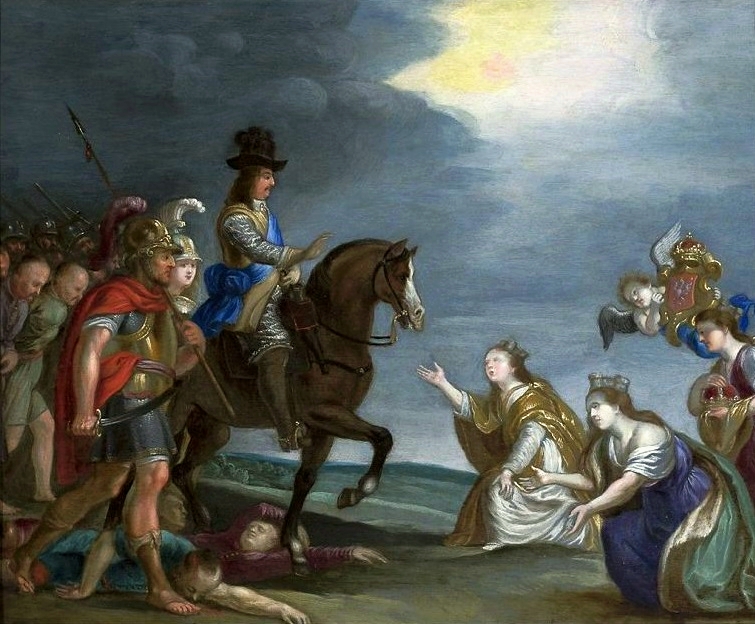
Triumph of Karl X Gustav over the Polish–Lithuanian Commonwealth, circa 1655; Credit – Wikipedia
Karl Gustav’s short reign concentrated on the healing of domestic discords from the reign of Queen Christina and the rallying of Sweden around his new policy of conquest. He achieved great military successes in the Second Northern War against Denmark-Norway and Poland-Lithuania.
On January 4, 1660, the Riksdag of the Estates opened in Gothenburg, Sweden. The Riksdag of the Estates was the assembly of the Four Estates of Sweden which historically were the lines of division in Swedish society. Karl Gustav was in attendance and was accompanied by his wife Hedwig Eleonora, their four-year-old son Karl, and Karl Gustav’s sister Marie Euphrosine of Zweibrücken-Kleeburg who had married Count Magnus Gabriel De la Gardie, then the Lord High Treasurer of Sweden. Within a few weeks, Karl Gustav became ill with influenza which developed into pneumonia.
On February 12, 1660, Karl Gustav became increasingly ill with a high fever and had difficulty breathing. He signed his will appointing a regency consisting of six relatives and close friends for his four-year-old son who would soon be Karl XI, King of Sweden. Karl Gustav said goodbye to his wife, his son, and his closest friends. In the early evening, his condition worsened again and he could not lie down due to his breathing difficulties. He was held up in the arms of Marshal Gabriel Oxenstierna and Count Nils Brahe. At midnight, the doctors announced that death was approaching, and Karl Gustav said goodbye to those present again. Karl IX Gustav, King of Sweden died at the age of 37 in the early morning hours of February 13, 1660. He was buried at Riddarholmen Church in Stockholm, Sweden. His wife Hedwig Eleonora survived her husband by fifty-five years and her son by eighteen years, dying on November 24, 1715, in Stockholm, Sweden at the age of 79. She was buried with her husband at Riddarholmen Church.

Sarcophagus of Karl X Gustav, King of Sweden; Credit – Wikipedia
This article is the intellectual property of Unofficial Royalty and is NOT TO BE COPIED, EDITED, OR POSTED IN ANY FORM ON ANOTHER WEBSITE under any circumstances. It is permissible to use a link that directs to Unofficial Royalty.
Works Cited
- En.wikipedia.org. 2021. Charles X Gustav of Sweden – Wikipedia. [online] Available at: <https://en.wikipedia.org/wiki/Charles_X_Gustav_of_Sweden> [Accessed 28 August 2021].
- En.wikipedia.org. 2021. Hedwig Eleonora of Holstein-Gottorp – Wikipedia. [online] Available at: <https://en.wikipedia.org/wiki/Hedwig_Eleonora_of_Holstein-Gottorp> [Accessed 28 August 2021].
- En.wikipedia.org. 2021. Catherine of Sweden, Countess Palatine of Kleeburg – Wikipedia. [online] Available at: <https://en.wikipedia.org/wiki/Catherine_of_Sweden,_Countess_Palatine_of_Kleeburg> [Accessed 28 August 2021].
- Flantzer, Susan, 2021. Christina, Queen of Sweden. [online] Unofficial Royalty. Available at: <https://www.unofficialroyalty.com/christina-queen-of-sweden/> [Accessed 28 August 2021].
- Sv.wikipedia.org. 2021. Karl X Gustav – Wikipedia. [online] Available at: <https://sv.wikipedia.org/wiki/Karl_X_Gustav> [Accessed 28 August 2021].

